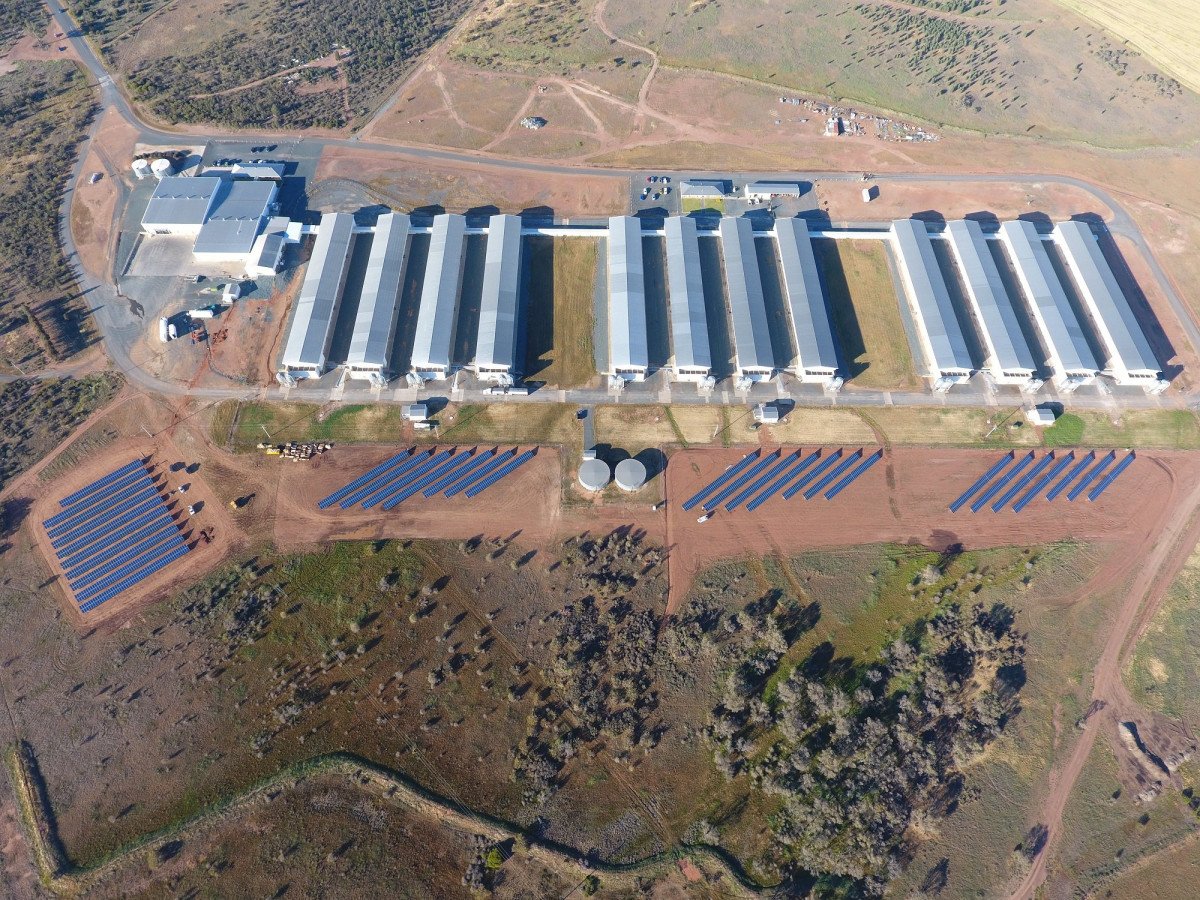
[ad_1]

Egg farmers are embracing renewable vitality at an unprecedented fee, with an enormous uptake in large-scale photo voltaic tasks over the past six months.
Photo voltaic installations at egg farms with a mixed capability of 7000 kilowatts are at the moment below development or have been accomplished since August 2017, equalling roughly 10,000 tonnes of offset carbon dioxide or greater than 2000 vehicles taken off the highway for a 12 months.
Tempo Farm, one among Australia’s largest egg farming teams, has invested $3.2 million in three large-scale photo voltaic tasks throughout their New South Wales farms over the past six months.
Basic Supervisor, Paul Tempo, stated the annual output throughout the three websites shall be 2.7 million kilowatt hours – sufficient to energy greater than 400 houses.
“Each kilowatt hour of vitality produced by the solar is a kilowatt hour you don’t have to purchase, and with vitality costs rising the way in which they’ve it made good enterprise sense for us,” Mr Tempo stated.
“However we’re solely one among a stack of companies throughout the egg business making the funding in photo voltaic. Roof house is at capability for some farmers and we’re now seeing floor mounted techniques being put in.”
Power is a significant enter and important value in all agricultural manufacturing however the egg business is especially uncovered to cost hikes as most hens are saved in local weather managed sheds. Photo voltaic is an efficient supply of vitality for egg farms as the dimensions and timing of each day peak demand mirrors peak vitality manufacturing as extra vitality is used to chill sheds throughout the center of the day.
Natalie Collard, the Clear Power Council’s Govt Basic Supervisor Business Improvement, stated many agricultural operations are actively in search of methods to slash their payments in the long run.
“The egg business is switching to photo voltaic in a giant means and that’s good for jobs, it’s good for his or her competitiveness and, in the end, good for shoppers as properly,” she stated.
“Regional components of Australia want these operations to succeed due to the numerous hundreds of individuals they make use of, and it’s implausible that renewable vitality could be part of driving that success.”
ENDS
Picture caption: Tempo Farm has invested in three massive scale photo voltaic tasks throughout their NSW farms. Picture courtesy of Todae Photo voltaic www.todaesolar.com.au
Background
The egg business may be very reliant on dependable and inexpensive energy. The massive scale flocks required to produce the volumes demanded by Australian shoppers are shielded from harsh circumstances in local weather managed sheds which have a minimal requirement of three part energy from the electrical energy grid.
As land on or close to the grid is contested by increased worth residential and industrial use, egg farms are commonly pushed additional afield which exposes them to bespoke and excessive value electrical energy distribution.
Continuity can be a vital challenge to make sure hen welfare could be maintained, which means egg farms require industrial diesel turbines on web site for use within the occasion of a black out. The egg business has been considerably impacted by electrical energy worth will increase over the past decade the place as egg costs have been comparatively static. This has offered a robust incentive for egg farmers to discover renewable vitality choices to stay viable and procure a aggressive benefit.
In distinction to the challenges of the traditional electrical energy grid, photo voltaic vitality performs to egg farmers benefits as they often have obtainable shed roof house or different areas put aside as biosecurity buffer zones that can be utilized for floor mounted photo voltaic installations.
As the value of photo voltaic expertise has lowered and vitality effectivity has elevated, the enterprise case for business photo voltaic has turn out to be compelling. In contrast to the residential sector, the dimensions and timing of each day peak demand mirrors peak vitality manufacturing on egg farms as extra vitality is used to chill sheds throughout the center of the day.
[ad_2]

